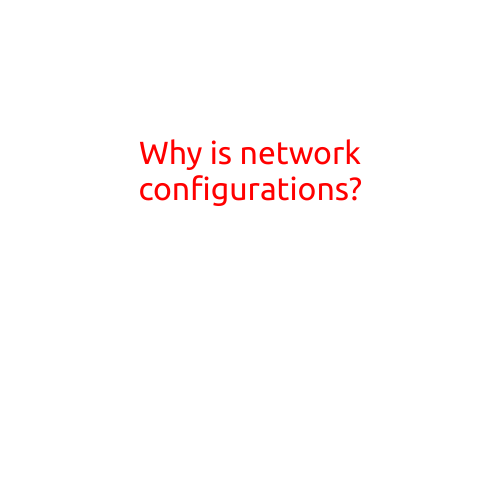
Why is Network Configuration Important?
In today’s digitally connected world, networks play a vital role in facilitating communication, information exchange, and overall business operations. A network configuration refers to the process of setting up and organizing a network’s physical and logical components to ensure efficient and secure communication between devices. But why is network configuration important?
Ensuring Network Security
One of the most critical reasons for network configuration is to ensure network security. A secure network configuration involves setting up firewalls, intrusion detection systems, and access controls to prevent unauthorized access and malicious activities. A well-configured network reduces the risk of cyber attacks, data breaches, and other security threats, protecting sensitive information and maintaining business continuity.
Optimizing Network Performance
Network configuration is essential for optimizing network performance. A properly configured network ensures that devices can communicate efficiently, reducing latency, and increasing data transfer speeds. By configuring network devices, such as routers and switches, to work together in harmony, network administrators can ensure that network traffic is routed correctly, minimizing delays and errors.
Simplifying Network Management
Proper network configuration simplifies network management. When a network is properly configured, network administrators can quickly identify and troubleshoot issues, reducing downtime and minimizing the cost of repairs. A well-configured network also makes it easier to scale and upgrade the network as the business grows, ensuring that the network is always able to meet the evolving needs of the organization.
Supporting Business Continuity
Network configuration is critical for supporting business continuity. A properly configured network ensures that critical business applications and services are always available, reducing the risk of downtime and data loss. By configuring network redundancy and failover systems, organizations can ensure that their networks remain operational even in the event of equipment failure or maintenance.
Meeting Compliance Requirements
In regulated industries, such as healthcare and finance, network configuration is crucial for meeting compliance requirements. Organizations must ensure that their networks are configured to meet specific regulatory standards, such as HIPAA and PCI-DSS, to protect sensitive information and maintain compliance.
Increasing Productivity
Finally, network configuration can increase productivity by ensuring that users have access to the resources and applications they need to perform their jobs efficiently. A properly configured network reduces the risk of technical issues and errors, allowing users to focus on their work rather than troubleshooting connectivity problems.
In conclusion, network configuration is essential for ensuring network security, optimizing network performance, simplifying network management, supporting business continuity, meeting compliance requirements, and increasing productivity. By taking the time to properly configure their networks, organizations can reduce the risk of technical issues, minimize downtime, and maintain a competitive edge in the digital marketplace.





